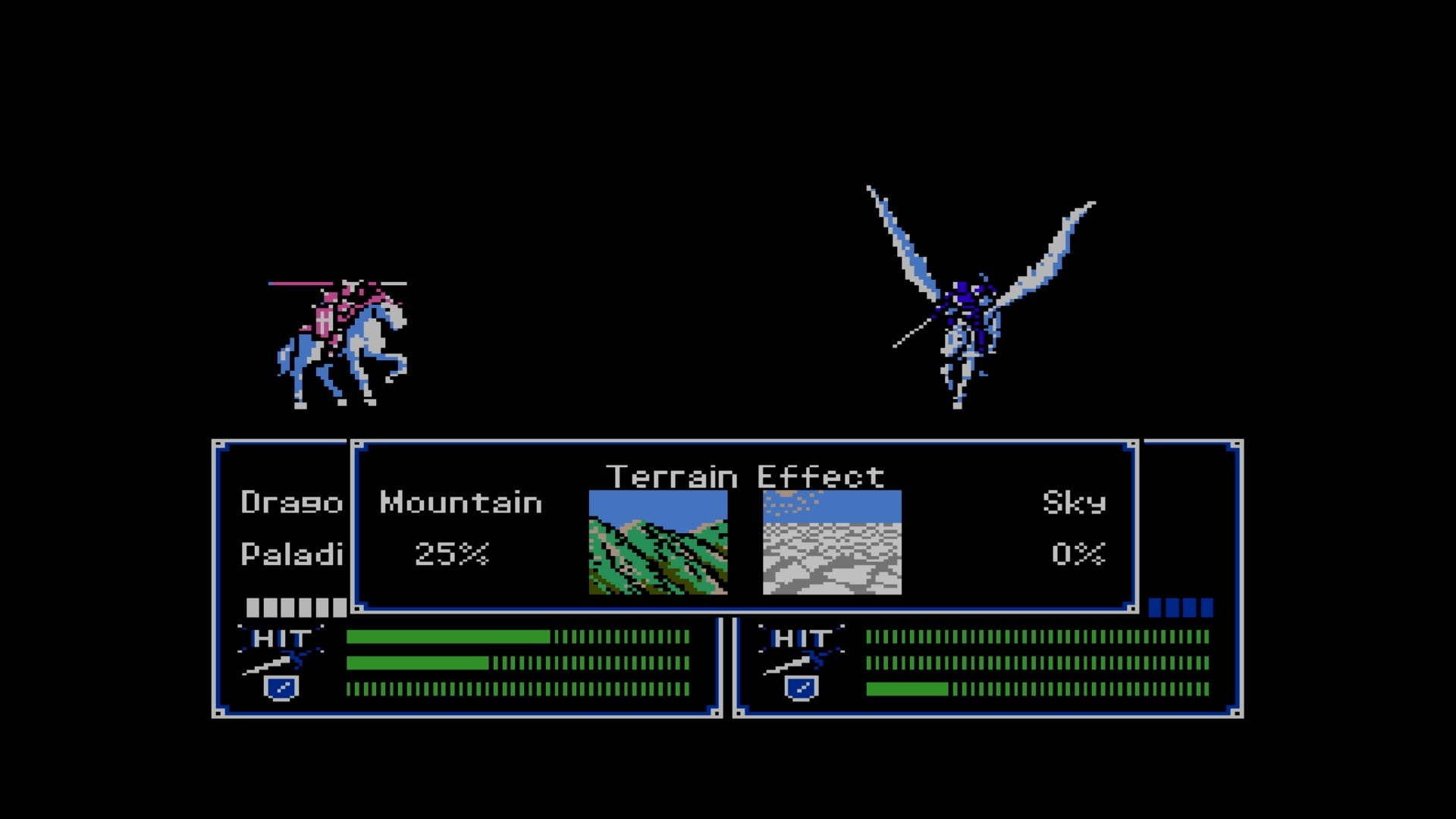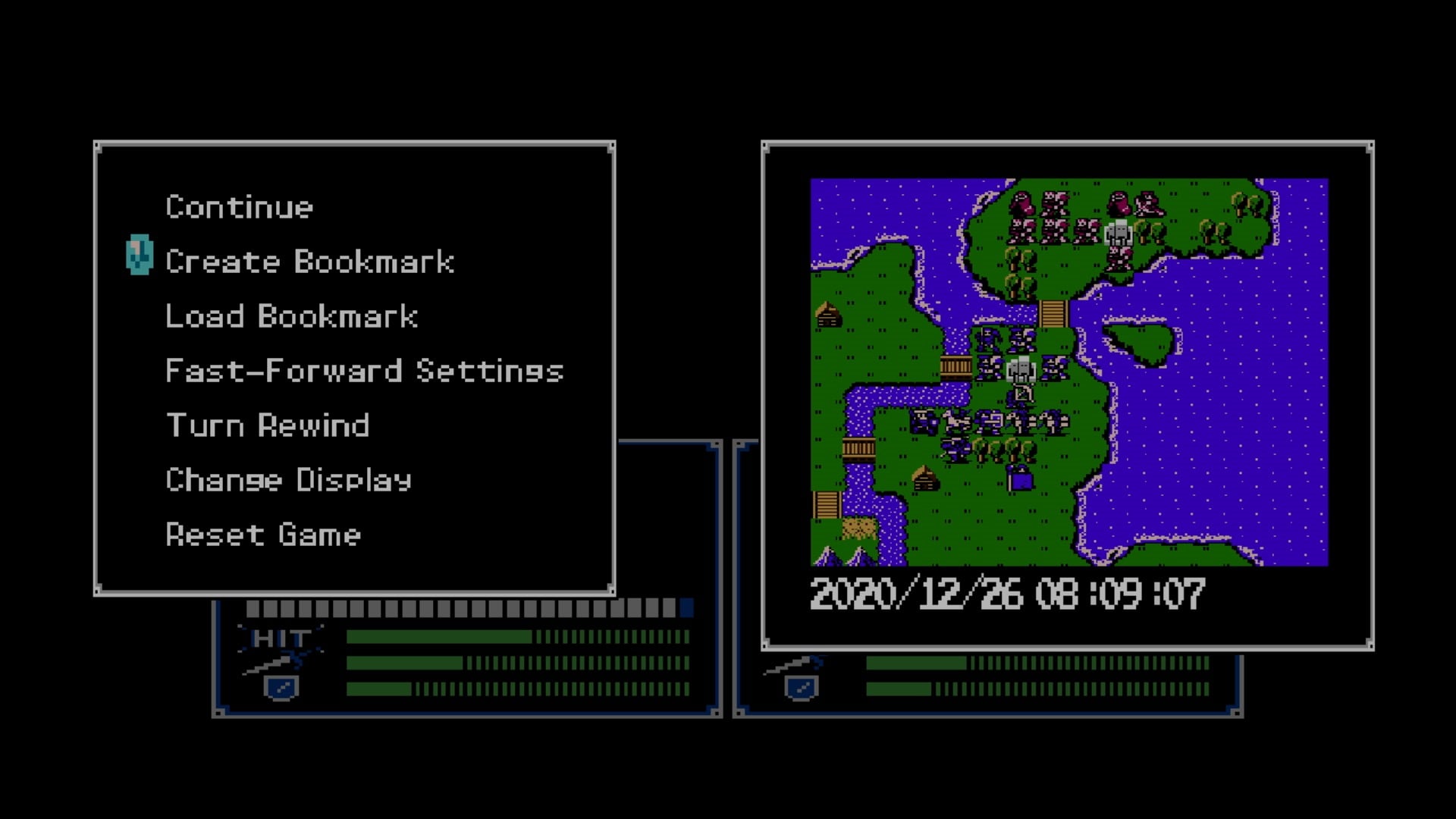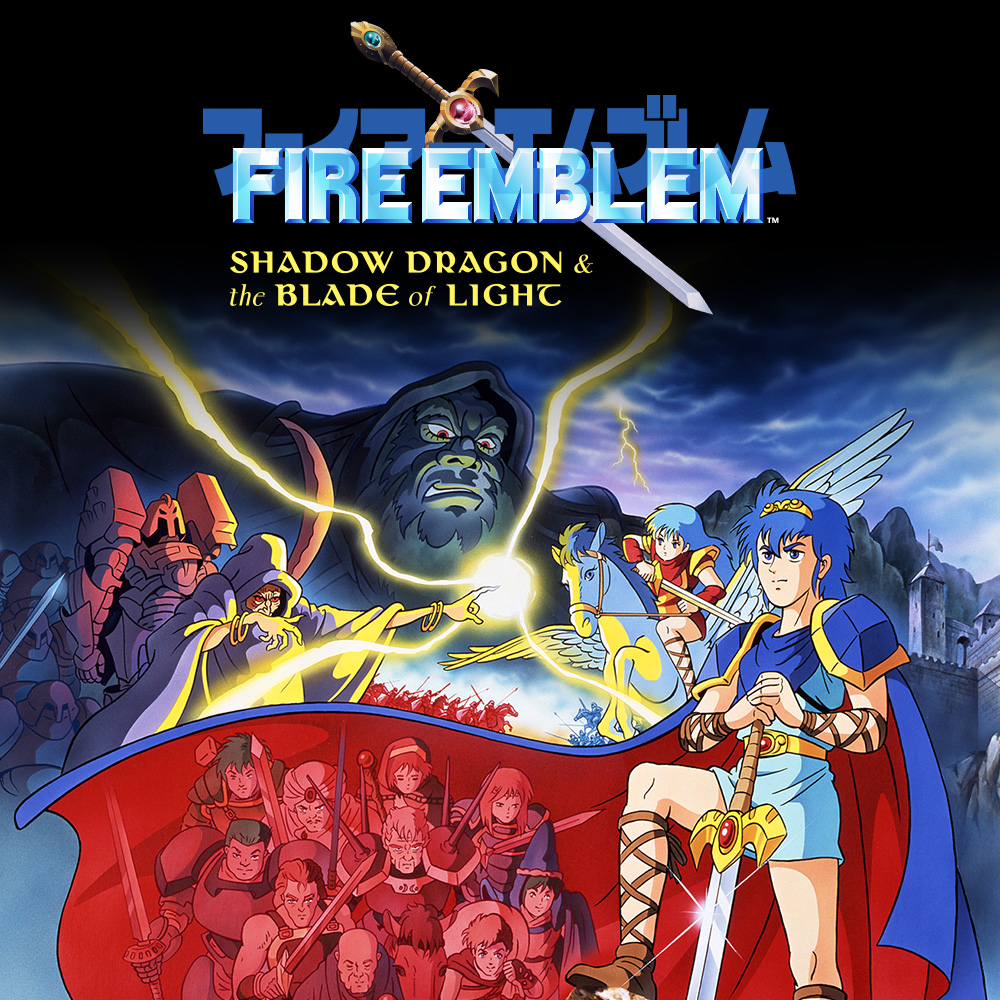Normally when a series grips me the way Fire Emblem has, I deep dive into as many releases as possible. Anyone who was introduced by Super Smash Bros. “Wait, who’s Marth?” Melee will tell you that for the longest time that was a very shallow pool. Being in a post-Awakening world now, that’s changed, and thanks to Heroes I have a little dose of Fire Emblem every day.
That all being said, I never got around to playing the original Famicom title, Fire Emblem: Shadow Dragon & the Blade of Light.
Having been more or less retold three times (only one of which released out of Japan), and harkened back to throughout the thirty year series, revisiting Marth’s original journey never felt all that necessary. Well, nothing says unnecessary quite like this limited time, eShop only localization, so here we go. No matter how interested I am from a historical and series-fan perspective, I can’t wholeheartedly recommend taking up Falchion in this curious release to more general audiences.
Lacking in proper form
Plot wise, the game concerns Prince Marth of Altea fighting across a continent to reclaim his home land and stave off an ancient evil set to return to the world. He does this by gathering his own army bit by bit, impressing commoners and kings alike with his bearing and dedication. It’s a fairly straightforward plot, but it works for the game and has its share of twists and memorable characters.

In its gameplay, Shadow Dragon & the Blade of Light will also be familiar yet barren. Navigating maps and engaging enemies (or recruiting optional characters) all feels straightforward, though I struggle to imagine it making as much sense if it were my first Fire Emblem. It goes to show that the foundation it laid was a strong one – perhaps the strongest aspect of the entire game – but without clarity and conveniences that came later it’s no easy adventure.
Without additional development, the game’s impressively robust roster of 52 characters feel interchangeable – likely the point, as it’s expected that some will die for good along the way. Even then, baring more important or focused characters, those deaths (if you let them play out) feel less impactful than similar instances in later games.
Your spirit shall shine across the generations
Make no mistake, though. This is a fascinating time capsule of a game, and setting aside its finite availability I’m ecstatic that Nintendo would translate after all these years. There’s genuine novelty in seeing just where franchise archetypes like the Jagan or the Est originated, and retro game fans can enjoy some solid sprite work for the time.

It’s important to understand that all the games that followed this one (that is, all of them) borrow heavily from it, both in plot beats and those character archetypes. As such this can feel like a retrograde greatest hits of a game, even when it’s the one that gave us our first blue haired sword lord. I love all the pieces and ideas in Fire Emblem the first, but that’s because I’ve been eating them up since 2003.
Ultimately, Archanea feels archaic. The only improvements made in the porting process are the ability to rewind turns, adjust game speed in certain ways, and bookmark save states. They’re very welcome, particularly since difficulty here can be particularly high. That difficulty doesn’t always come from the maps or enemies, though, and instead is rooted in missing information and presentation we’ve come to expect from Fire Emblem.

Living history, for now
Holding it to the standard of Three Houses (or even the Game Boy Advance’s Blazing Blade) would make about as much sense as comparing the original Super Mario Bros. to Odyssey. That said, Shadow Dragon & the Blade of Light is worse for wear than the timeless, recently Game & Watch’d platformer thanks to how the series has grown beyond its (admittedly iconic) first entry.
As a more complex genre that also relies on narrative, the improvements to Fire Emblem titles are multiplicative. Things like UI elements, a more streamlined inventory system, customizable skills, support conversations, and even the Weapon Triangle are all absent. Turning back the clock strips away not just iconic gameplay ideas, but gradually gathered quality of life improvements. This leaves a bare framework in their place. This is Fire Emblem through and through, make no mistake. It’s just the absolute minimum of what a Fire Emblem should be.
That might all be unfair to say, though. This is an NES game finally given a chance, and having that perspective is important. The only people I can fully say “Yes, you need this game” to are diehard Emblemers and retro collectors. For its low price point it’s worth having this window to the past, just don’t expect to like what you see for long.

System: Nintendo Switch
Release Date: December 4, 2020
Categories: Strategy RPG
Publisher: Nintendo
Developer: Intelligent Systems



